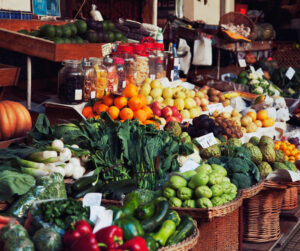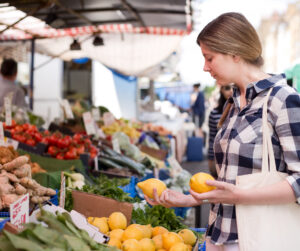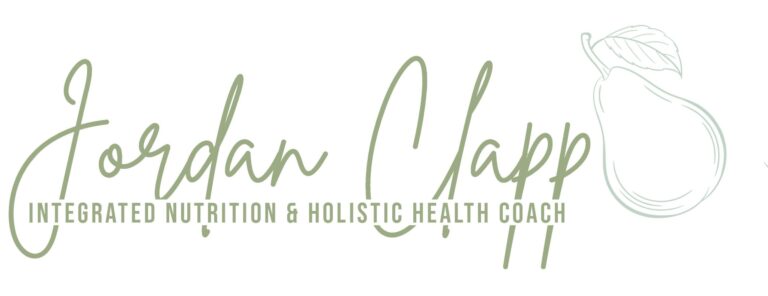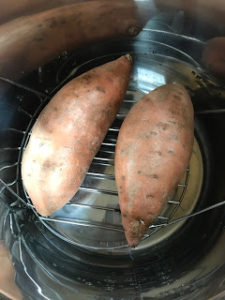New Life. New Foods.
Spring is here! The birds are singing, the bees are buzzing, and everything is blooming!
Spring has a vibrancy that seems to permeate all living things. The trees, the flowers, even the produce section. Spring fruits and veggies, along with amazing weather, are often a catalyst in emerging from our winter hibernation and incorporating more fresh, whole foods in our meals. Eating seasonally is not only enjoyable from a tastebud standpoint, it’s also one of the best ways to support our bodies by fueling them with the best nutrient dense foods available. Keep reading for my favorite reasons to eat with the seasons!

1. Diversify Your Diet
We’ve all been in that rut before where we eat the same thing week after week because it’s convenient. But did you know that the more diverse your diet is, the healthier your gut is? Studies have shown that not only is a happy healthy gut dependent on a diverse diet but that people who have less diverse gut bacteria are more likely to have health issues. Eating seasonally allows us to try new foods every few months that are rich in the vitamins and minerals we need for a healthy body! One of my favorite ways to eat seasonal veggies is adding them to a protein packed salad. I love this Salmon and Spring Veggies Salad. It’s colorful, it’s delicious, and it keeps you full thanks to the fiber and healthy fats. Another great choice is this Thai Salmon Salad with Sesame Ginger Dressing from Delicious Little Bites. It’s packed with superfoods like kale and cabbage and has a deliciously savory yet fresh flavor!
 2. Peak Nutrient Density
2. Peak Nutrient Density
Seasonal foods are harvested at peak ripeness and then immediately shipped to their destination as opposed to being harvested in the off season and ripened on the truck or kept for later in cold storage. Some of my favorite Spring fruits and vegetables are: asparagus, kale, avocados, and strawberries. All of which can be used to add flavor to a crisp, cool salad or added to a smoothie for a delicious mid-day nutrient boost. Fruits and veggies are most nutrient dense right after harvest so take advantage of the local section at your grocery store. Which leads me to my next and maybe my favorite reason to eat seasonally!
 3. Support Local Farmers Markets
3. Support Local Farmers Markets
You can support your community and local farmers while eating seasonally! How great is that?! Farmers Markets usually open in the Spring and close at the end of Fall. This is, in my opinion, the best place to take advantage of the abundance of seasonal fruits and veggies. You’ll often find free range eggs, grass-fed meats, and organic produce for cheaper than you would at your local grocery store due to the reduction in their costs when sold directly to you. You’re purchasing directly from their fields to your table. Many Farmers Markets only allow food to be sold that was produced within 200 miles so you really are getting the freshest produce available to you.
 4. More Bang for your Buck
4. More Bang for your Buck
Have you ever noticed how much cheaper certain fruits and veggies are during certain times of the year? This is mainly due to supply and demand. Certain crops grow better during certain seasons which leaves farmers with an abundance of various produce throughout the year. Seasonal foods are often shipped in larger amounts and sold at a cheaper price to support the demand. Move it or lose it, right? The cheaper the price, the less time those fruits and veggies spend waiting to be brought home. By choosing seasonal foods, you can save money as well as enjoy the most flavorful options available. Consider stocking up on things like berries which freeze well and can be used later throughout the year for snacking, baking, smoothies, and more. Or consider canning seasonal vegetables to use later in the year in soups or stews.
 5. Better for the Environment & Better for Your Health
5. Better for the Environment & Better for Your Health
When foods are harvested out of season, chemical gases are used to ripen the fruit. These ripening agents, calcium carbide in particular, have been shown to be harmful to cellular, reproductive, and neurological health in animal studies. When you purchase food that didn’t have to travel far to get to you, it’s less likely that they have been sprayed with pesticides, herbicides, and fungicides. These toxins can deplete our soil and affect the quality of our food which in turn affects how optimally (or not) our bodies function. I try to consume organic foods whenever possible knowing that it’s better for our environment and knowing that I’m not adding more toxins to my system.
I hope you’ve found this both informative and motivating in your journey to better health! Eating seasonally gives us the opportunity to be thankful for what we have right now while supporting our bodies in preparation for the next season. I’ve found that when I slow down and am intentional about what I’m fueling my body with, I’m able to do life better. I’m hopeful that incorporating seasonal eating into your routine will do the same for you!




